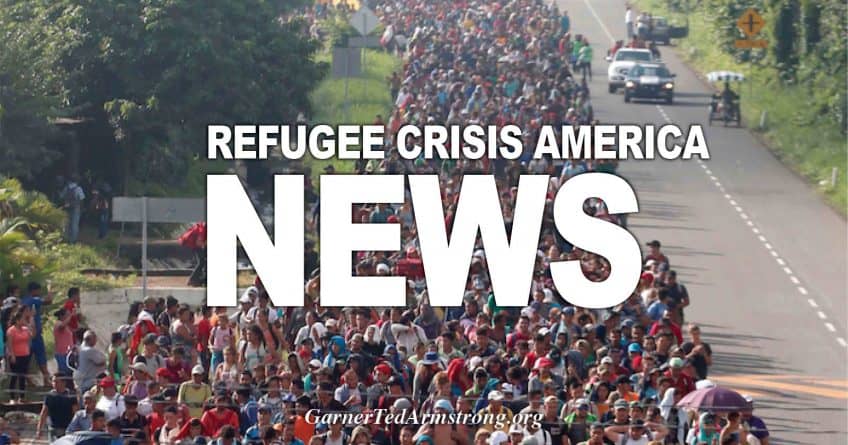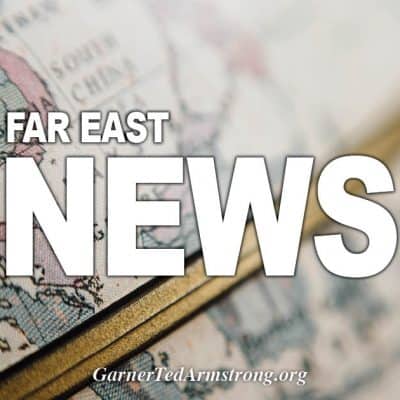
Getty Images
The United States closed its borders with Canada and Mexico to all but “essential” traffic more than a month ago, on April 7, the day our book “North American Borders in Comparative Perspective” (University of Arizona Press 2020) was published. The deadly COVID-19 pandemic was making its way across North America, tightening borders between countries, states, provinces, communities, friends, and neighbors.
Like the birds, the coronavirus knows no boundaries. It stealthily crosses political and geographic boundaries at will to infect hundreds of thousands, leaving devastating casualty numbers in its wake.
The pandemic, still raging in the middle of May, has transformed North American borders yet again. COVID-19, just like the events of 9/11, has altered the nature of North American borders and how they function to contain, integrate and set apart the United States, Mexico, and Canada — and connect them into a global world.
The past quarter of a century has witnessed immense change in North American borders. The signing of NAFTA (now the U.S–Mexico–Canada Agreement or USMCA) in 1994 constitutes a turning point in North America’s border management and economic relations. Since then, and until very recently, borders have shrunk, bridges have been built and the three nations have moved toward a higher level of integration, despite the “War on Terror” after 9/11.
Then, in 2016, the U.S. presidential election vastly transformed the borders, with President Trump’s vision of a southern border wall and stringent immigration enforcement. A resultant refugee and asylum crisis, and now the COVID-19 pandemic, have reversed aspirations for a borderless — or at least more integrated — North America. Today, the region’s borders remain partially closed. Amid this turmoil, the USMCA will go into effect on July 1, and the Trump administration — with re-election at stake — possibly could see the deal as a way to “open up America again.” Prospects for North American borders are shadowed by uncertainties.
What will the future bring? What kinds of borders will emerge post-pandemic?
Globalization opened borders and increased the permeability of boundaries, allowing the flow of people, goods, and ideas across national borders. But in recent decades there has been a backlash to “open borders,” as nationalist agendas have flourished in North America and elsewhere around the globe. A wave of populism has swept in on the strength of xenophobic beliefs, stereotypes, and lies to reinforce territorial boundaries in a contemporary world where they don’t make sense.
Borders are no longer either open or closed, but rather are in a state of “in-between,” and moving, constantly fluctuating. To comprehend how North America works in the 21st century, we must understand how shifting border relationships serve both to connect and to divide the United States, Canada, and Mexico.
We can pose two alternative scenarios.
The worst-case scenario would be an extended or even permanent partial to total closure of the continent’s borders that would include Trump’s border wall, a halt on legal and irregular immigration in the three countries, and a renegotiation of the USMCA. This could happen if the deaths from COVID-19 continue to spiral exponentially, particularly in the developing countries of the Americas or if a second wave of the disease follows the reopening of the world economy. Such conditions would “bring the state back in” to the three North American economies, and new forms of a managed economy and government regulation of commercial interests would be imposed in the region. A new global order would take shape, representing a victory for nationalism over globalism and open borders.
A more plausible scenario — and one that scares conservative and nationalist forces in the United States in particular — is that a form of authoritarian capitalism, call it the “Chinese model,” will gain dominance in North America.
The U.S. leadership appears more intent on preventing the Chinese from branding and controlling this model of authoritarian capitalism than about the consequences and the authoritarian nature of the model itself.
Whether the control is in China or in the United States, borders in North America will fundamentally change again. Decisions to sort, enable or exclude, and to enhance the movement of people, goods, and ideas across North American borders will become even more centralized and politicized. Borderlands and “borderlanders” will countless. The concept of an integrated region of North America, so enticing in the 1990s, likely will fade away.
Guadalupe Correa-Cabrera, Ph.D., is an Associate Professor of Government and Policy at George Mason University and an expert in the fields of migration, human smuggling, organized crime, and trafficking in persons. She is past president of the Association for Borderlands Studies (ABS) and Global Fellow at the Woodrow Wilson International Center for Scholars. Follow her on Twitter @GCorreaCabrera.
Victor Konrad teaches geography at Carleton University. He was president of the Association for Borderlands Studies. Currently, he is co-director of the Borders in Globalization Project and serves on the editorial board of the Journal of Borderlands Studies.
Source: https://thehill.com/opinion/international/497096-covid-19-and-the-future-of-north-american-borders
[Disclaimer]









